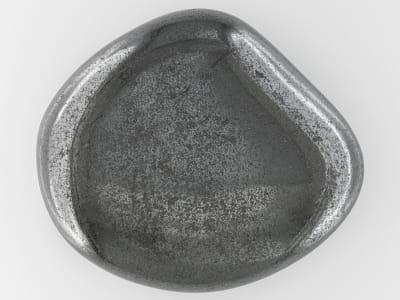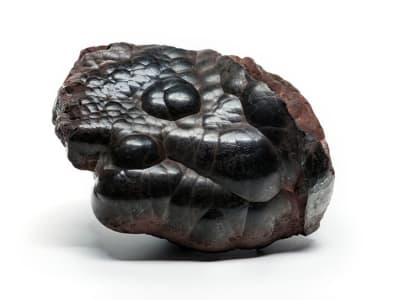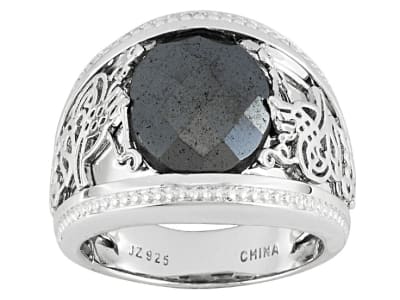Hematite is a dark gray to black mineral known to various cultures throughout history. Babylonians, Egyptians, Greeks, and Romans were a few of the civilizations that made use of this mineral. Hematite derives its name from a Greek word for blood, an allusion to the reddish powder produced during the fashioning process due to the presence of iron.
General Information
Tolerance:(-0.070)
LWUV: Inert
Hematite Colors
-
 Black
Black -
 Gray
Gray -
 Red
Red
Countries of Origin
Argentina; United States of America; United Kingdom of Great Britain and Northern Ireland; Switzerland; Spain; Canada; Austria; Turkey; Morocco; Unknown; Norway; China; Ireland; Brazil; Italy; Mexico; South Africa; Chile; France; Germany
History
Hematite is the main component in red ochre. Red ochre has been used since prehistoric times for cave paintings and personal adornment. There is evidence of its use in funeral practices around the world dating back to the Paleolithic. The Isle of Elba, Italy was an important source in Ancient Europe.
Care
Normal Care
More About Hematite
Pliny the Elder in his book “Natural History” states that it is used to treat eye disorders, bladder issues, blood maladies, and liver problems. In medieval times the Bishop of Rennes in Brittany, in his book “Liber Lapidum” states that hematite can be used as an astringent, drunk to curb heavy menstruation, ease bowel problems, and was said to dissolve bladder stones. It was also used to treat nose bleeds.


